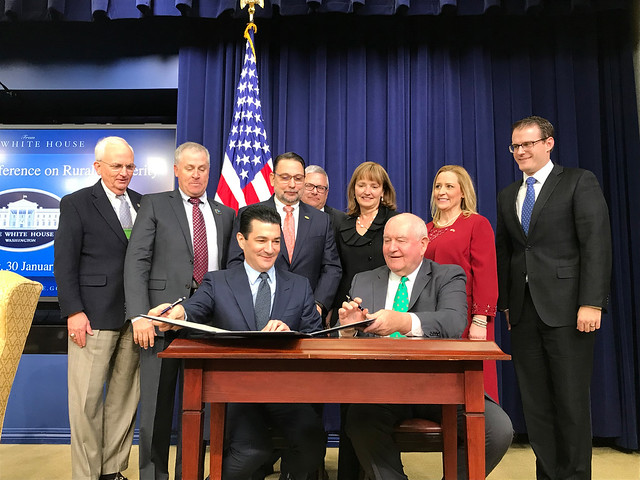
The Food and Drug Administration (FDA) and USDA recognize that close communication and knowledge sharing is critical to ensuring a safe and abundant food supply for Americans and others.
As outlined in USDA Strategic Goal 7 (USDA FY2018-2022 Strategic Plan (PDF, 1.8 MB)), food safety is a priority at the Department. No fewer than six USDA agencies work to protect the public from the dangers of pathogens that may cause illness. From inspection of slaughter houses to innovations in processing, testing, and monitoring to keeping Americans informed, USDA may prevent as many as 25,000 illnesses a year.
The U.S. Department of Health and Human Services’ FDA regulates foods other than meat, poultry, and processed egg products that are regulated by USDA. FDA’s Center for Food Safety and Applied Nutrition (CFSAN) provides policy and planning, inspections, and scientific research on issues related to the safety of foods, cosmetics and plant health. Together, USDA and FDA collaborate on food protection-related science, emergency response and preparedness.
USDA’s Secretary Sonny Perdue and Scott Gottlieb, Commissioner of Food and Drugs, signed an agreement to coordinate research efforts in food safety and related regulatory issues. The event formalized efforts started between program directors who recognized a need to share expertise in their respective sciences.
This agreement takes steps to increase clarity, efficiency, and potentially reduce the number of duplicate regulations. For example, when a canned soup facility produces both chicken noodle soup and tomato soup, it is subject to regulation by both agencies. Going forward, ways to reduce inspection inefficiencies, while upholding safety standards will be identified.
Streamlining can reduce costs on industry and free up government resources to target areas of high risk.
Further, the agencies committed to increase efficiency of the regulatory processes specifically for biotechnology products and in produce safety, as they implement the FDA Food Safety Modernization Act (FSMA).
USDA’s Office of the Chief Scientist (OCS) recently hosted a seminar for USDA scientists to hear from FDA scientists on the Total Diet Study (TDS), specifically its impacts, modernizations, and exposure assessments. FDA reciprocated by hosting USDA scientists who shared their research into pesticides in foods.
With coordination in science, education and outreach, the USDA and FDA partnership will effectively ensure the safety of the foods we consume and help ensure that we “do right and feed everyone.”



